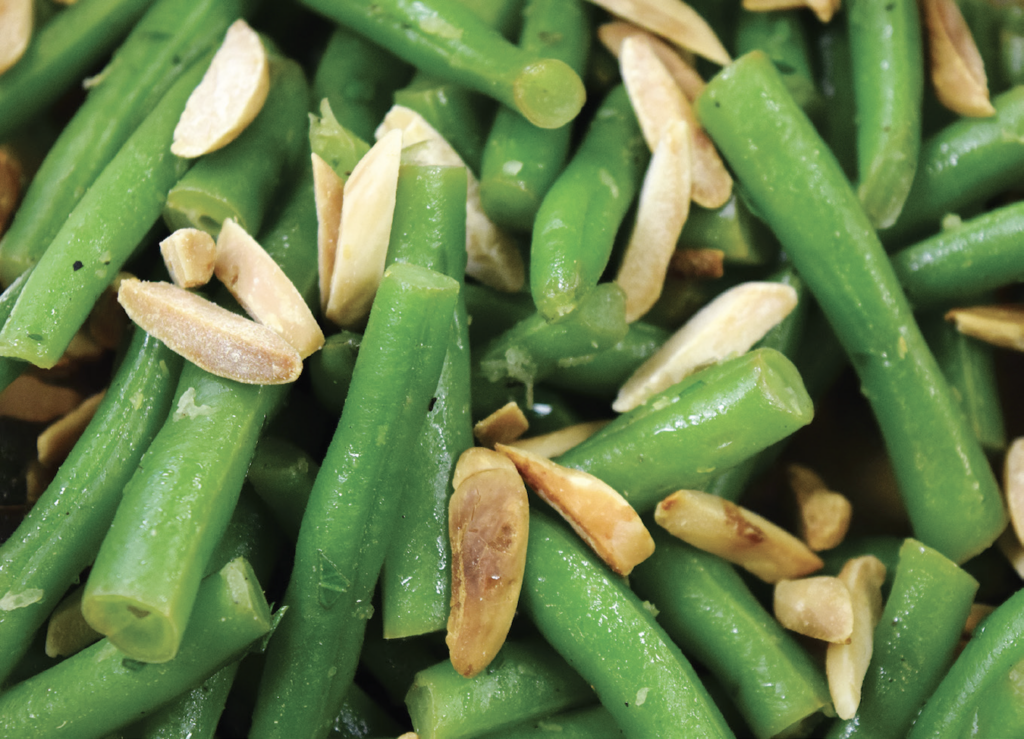Green Beans – Nutrition Facts
go.ncsu.edu/readext?1085293
en Español / em Português
El inglés es el idioma de control de esta página. En la medida en que haya algún conflicto entre la traducción al inglés y la traducción, el inglés prevalece.
Al hacer clic en el enlace de traducción se activa un servicio de traducción gratuito para convertir la página al español. Al igual que con cualquier traducción por Internet, la conversión no es sensible al contexto y puede que no traduzca el texto en su significado original. NC State Extension no garantiza la exactitud del texto traducido. Por favor, tenga en cuenta que algunas aplicaciones y/o servicios pueden no funcionar como se espera cuando se traducen.
Português
Inglês é o idioma de controle desta página. Na medida que haja algum conflito entre o texto original em Inglês e a tradução, o Inglês prevalece.
Ao clicar no link de tradução, um serviço gratuito de tradução será ativado para converter a página para o Português. Como em qualquer tradução pela internet, a conversão não é sensivel ao contexto e pode não ocorrer a tradução para o significado orginal. O serviço de Extensão da Carolina do Norte (NC State Extension) não garante a exatidão do texto traduzido. Por favor, observe que algumas funções ou serviços podem não funcionar como esperado após a tradução.
English
English is the controlling language of this page. To the extent there is any conflict between the English text and the translation, English controls.
Clicking on the translation link activates a free translation service to convert the page to Spanish. As with any Internet translation, the conversion is not context-sensitive and may not translate the text to its original meaning. NC State Extension does not guarantee the accuracy of the translated text. Please note that some applications and/or services may not function as expected when translated.
Collapse ▲Green beans are a common staple in households across the country. Green beans, which may also be called “string beans” (because of the fibrous string that ran along the seam of the bean pod in many earlier varieties) or snap beans (because of the familiar ‘snapping’ sound heard when the beans are broken) are not always green despite their name, they can also be yellow or purple in color.
Health Benefits
Green beans are low in calories and they contain many important nutrients that provide several health benefits.
- Improve Heart Health: The legumes are full of antioxidants, including Vitamin C, flavovols, quercetin, and kaemferol. These antioxidants fight free radicals in the body, which helps to reduce cell damage and may help lower your risk of certain health conditions. Other health benefits of green beans include: Improved heart health, due to the high fiber content of green beans lowering LDL cholesterol.
- Protect Gut Health: The fiber in green beans helps to keep your digestive system healthy and running smoothly.
- Aids in a Healthy Pregnancy: A single cup of green beans has approximately one-third of your recommended intake of folate, a B vitamin that’s necessary for the growth and development of unborn babies.
- Protect Bone Health: Green beans are high in Vitamin K, and they also contain a decent amount of calcium. These nutrients are important for maintaining strong, healthy bones and reducing your risk of fractures.
- May help with Anemia: Green beans provide a decent source of plant-based iron that can help to ensure that you get the amount you need to avoid anemia.
Fresh, Frozen, or Canned: Does it Matter?
It’s not always easy to get fresh produce when you want it. Frozen or canned vegetables can fill in for fresh ones. Frozen green beans can be just as healthy as fresh, be careful not to overcook them which can destroy some vitamins and minerals. Canned green beans have a similar nutrient content to fresh or frozen, be sure to choose low-sodium and rinse them before cooking to remove any added salt.
Lemon Green Beans with Parsley and Almond
Serves 4.
Ingredients
- 8 ounces of fresh green beans, trimmed and cut into 11/2 to 2-inch pieces (total should be around 2 cups)
- 1/4 cup of sliced almonds, dry-roasted
- 1 tablespoon of finely snipped fresh parsley
- 1/2 teaspoon grated lemon zest
- 1/4 teaspoon salt
- 1/8 teaspoon black pepper, or to taste
- 1 teaspoon of olive oil
- 1 tablespoon lemon juice
Instructions Steam the green beans in a steaming basket for about 10 minutes or until tender. Or, cook in a small amount of water in a covered dish in the microwave for around 3 minutes and drain.
In a serving bowl, toss the green beans with the almonds, parsley, lemon zest, salt, black pepper, olive oil and lemon juice. Serve warm.
Storing Green Beans
Store unwashed fresh green beans in a container or plastic bag in the crisper of the refrigerator, where they will keep for around 7 days.
|
Nutrition Facts |
Amount/serving % DV | Amount/serving % DV | Amount/serving % DV |
| Total Fat 4g 6% | Sodium 5mg 0% | Vitamin A 9% | |
|
4 servings per container |
Saturated Fat 0g |
Potassium 16mg 5% |
Vitamin C 16% |
|
Amount per serving |
Monounsaturated Fat 3g |
Total Carbohydrate5g 2% |
Calcium 4% |
|
Calories |
Polyunsaturated Fat 1g |
Dietary Fiber 2g |
Iron 5% |
|
60 |
Trans Fat 0g |
Sugars 2g |
|
|
Cholesterol 0mg 0% |
Protein 2g 5% |
References: N.C. Cooperative Extension, Cleveland Clinic, WebMD





